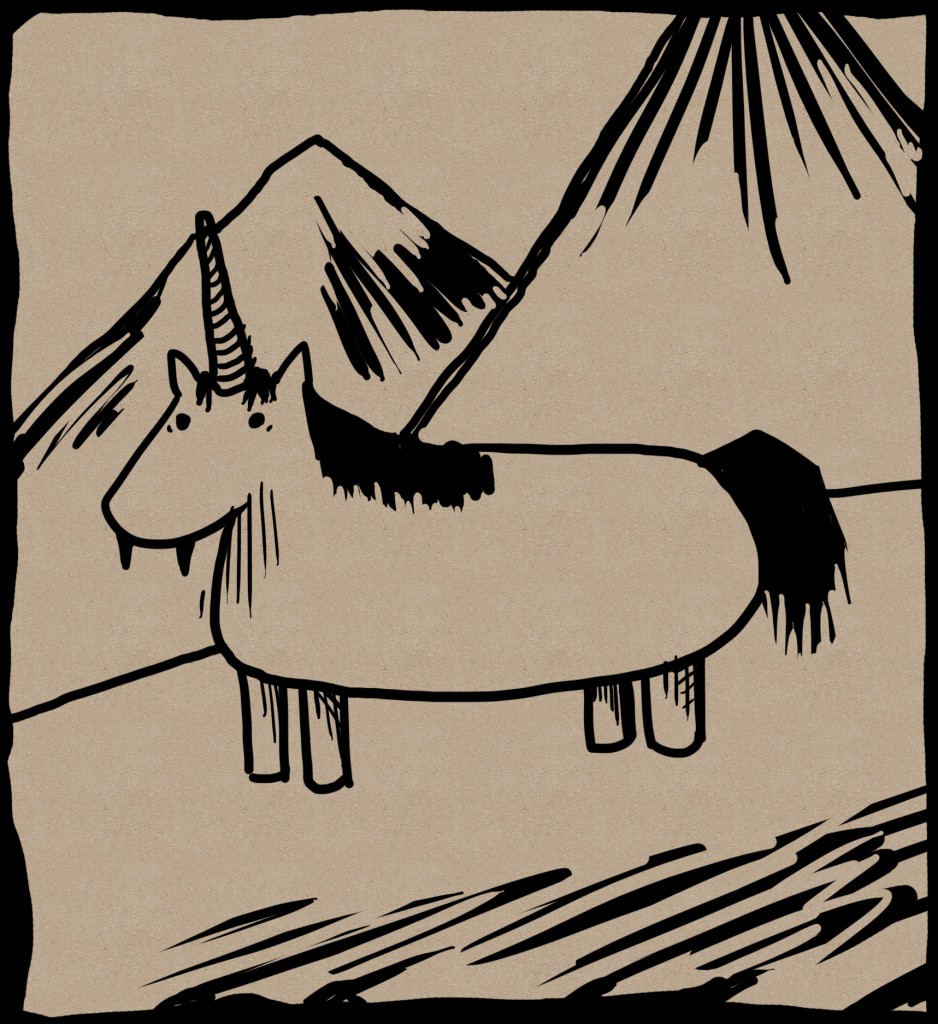An essay by Dr. E. Haraldson, presented by Torrey Podmajersky
Illustration by Katie Nyborg
1. Introduction
Evidence of carnivorism in Equus ferus unicornus has been widely recorded, but until now neither studied nor explained by science. Unicorns have been credited and blamed with the deaths of animals including wolves, polar bears, wolverines, and humans.
In part because of the rugged, remote terrain of the wild unicorn habitat, researchers had been unsuccessful in making scientifically valid observations of carnivorous behavior in unicorn herds until the pioneering work of Marchand, Dubois, and Clampt in 2009.
The breakthrough occurred north of Canada, when two Arctic unicorns were recorded in the act of killing a polar bear. After dispatching it with their “horns,” they ingested stomach and intestines, then bit off and swallowed several mouthfuls of fur.i
In this paper, we combine original research with unique analysis of historical records, genetics, bacteriology, and dentition. The three modern unicorn herds studied in this research live in Alaska and the Aleutian isles, the ice floes north of the Arctic Circle, and the Northern Isles. Remains of a fourth, ancient population was discovered in the Yakut region of Siberia, and carbon dated to 4000-3800 BCE. Based on this information, we propose a mechanism for carnivorism in unicorns that correlates with all available data.

The court record was first discovered by unicorn researchers because its evocative illustration was made available at auction.
To read the rest of this story, check out the Mad Scientist Journal: Spring 2012 collection.
Elizabeth Haraldsen earned her latest doctoral degree from the University of Northern Hamfordenshire for her work studying transitory herbological predation among arthropods. Her work has broadened to other forms of unique predation, especially focusing on evolution of species previously understood to be cryptozoological. Her current research expands beyond her recent focus on living equines to a study of the ectoplasmic Equus ferus ectomortus, commonly known as the “night mare.”
Torrey Podmajersky writes science fiction, fantasy, and stereo instructions for the 21st century. Drawing on experiences from science education to corporate communications, her stories confront the darkness in a relentless search for hope. Published work includes short a short story in Daily Science Fiction, post-apocalyptic anthology Finding Home, and young adult novel Gathering Grace. Torrey lives in Seattle with an antique cat, a new-minted adult, freeloading chickens, and a cutler. Follow her adventures on Twitter: @torreybird.
Katie Nyborg’s art, plus information regarding hiring her, can be found at http://katiedoesartthings.tumblr.com/
Follow us online: